St. Augustine’s 1896 Giant Octopus
Posted by: Loren Coleman on January 6th, 2011
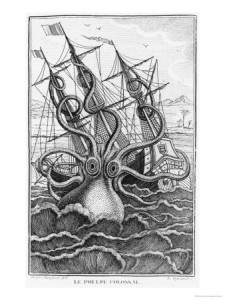
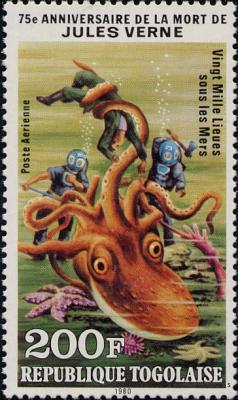
One of the strangest cryptozoological mysteries of the Caribbean is the Lusca, a giant octopus-like cephalopod said to live in the “blue holes” (narrow pits that plunge as much as 200 feet straight down through rock) of Andros and the Grand Bahama islands in the Bahamas, the Caicos Islands, and off Cuba. The blue holes of Bermuda may have Lusca too.

The most famous Giant Octopus beaching of all-time is the one that occurred in St. Augustine, Florida, in late 1896 and early 1897. I will soon be there, walking the beaches where the carcass once came ashore, went out to sea, and came in again and again.
The carcass was first spotted on the evening of November 30, 1896 by two young boys, Herbert Coles and Dunham Coretter, while bicycling along Anastasia Island. The enormous mass was half buried in the sand, having sunk under its immense weight. The two boys thought the carcass was the remains of a beached whale, as a similar stranding had occurred two years earlier near the mouth of the Matanzas River, located several miles to the south of St. Augustine (see map). For more of the chronology, see here.
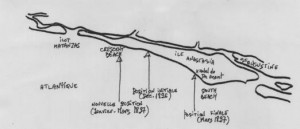
Map by Gary Mangiacopra, 1976.
The two boys returned to St. Augustine the same day and reported their discovery to a local physician, Dr. DeWitt Webb (below).

Some images from those days included sketches and photos:
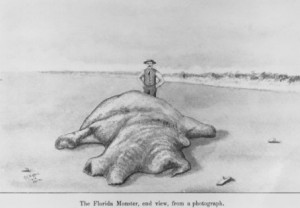
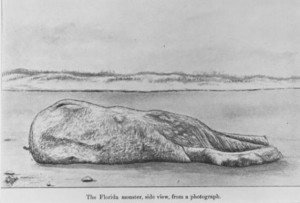
Drawings by A. E. Verrill, American Naturalist, 1897.
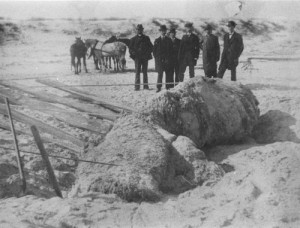
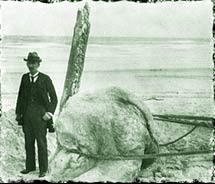
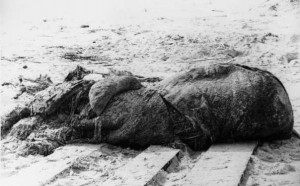
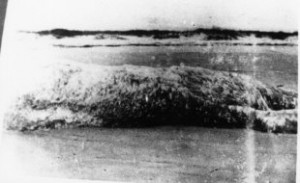

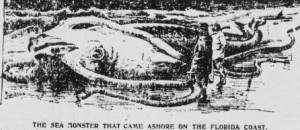

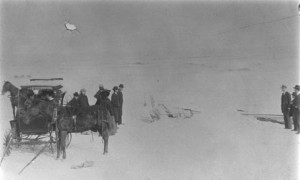
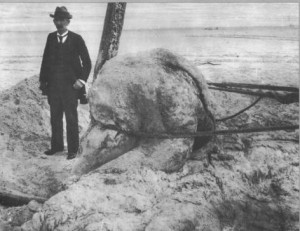
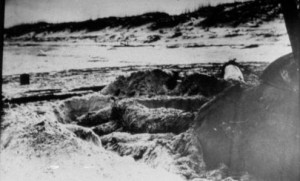
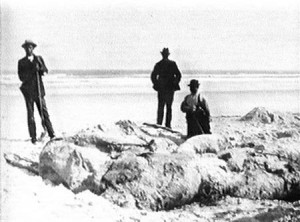
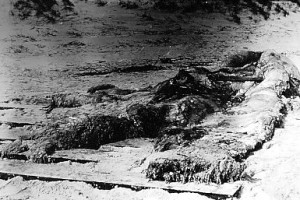
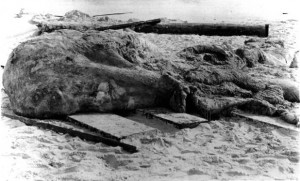
The surviving tissue samples are held by the Smithsonian.

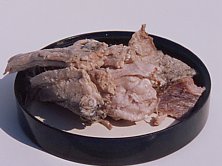
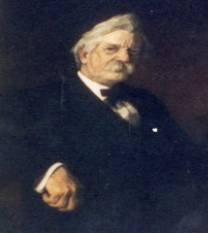
The man who is most responsible for preserving the details of the incident at the time: Professor Addison Emery Verrill.
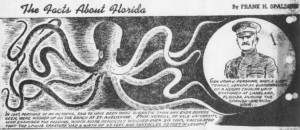
If you are in the area, come say hello on the evening of January 7th, 2011, St. Augustine’s First Friday, at the Ripley’s Believe It or Not! Museum (below). I’ll be there signing books and being interviewed on the Ripley’s radio program.

About Loren Coleman
Loren Coleman is one of the world’s leading cryptozoologists, some say “the” leading living cryptozoologist. Certainly, he is acknowledged as the current living American researcher and writer who has most popularized cryptozoology in the late 20th and early 21st centuries.
Starting his fieldwork and investigations in 1960, after traveling and trekking extensively in pursuit of cryptozoological mysteries, Coleman began writing to share his experiences in 1969. An honorary member of Ivan T. Sanderson’s Society for the Investigation of the Unexplained in the 1970s, Coleman has been bestowed with similar honorary memberships of the North Idaho College Cryptozoology Club in 1983, and in subsequent years, that of the British Columbia Scientific Cryptozoology Club, CryptoSafari International, and other international organizations. He was also a Life Member and Benefactor of the International Society of Cryptozoology (now-defunct).
Loren Coleman’s daily blog, as a member of the Cryptomundo Team, served as an ongoing avenue of communication for the ever-growing body of cryptozoo news from 2005 through 2013. He returned as an infrequent contributor beginning Halloween week of 2015.
Coleman is the founder in 2003, and current director of the International Cryptozoology Museum in Portland, Maine.










There are many good reasons to think that this was not a giant octopus but really only whale blubber. One of this reasons is the shape of the carcass. What many people want to interpret as the mantle of an enormous octopus, because the mantle of an octopus is of similar bulbous shape, can hardle be a cephalopod mantle. The reason for this is comparably simple. Have you ever seen an octopus outside water? Even a living one looks like a mass of jelly, not to speak about a dead one. The mantle completely collapses outside water and becomes very flat, and would hardly be still so volumous after several days on a beach.
This was always one of my favorite stories.
However, the tissue was tested and found to be octopus tissue–hence the reason the debate goes on. AT first, it was thought to be the remains of a whale, but it was the testing of the samples that changed people’s minds.
As for the mass, an octopus is basically a giant mass of muscle. The remains found on the beach were pretty spread out and flat–as shown in the above pics. Part of the problem with masses of tissue like that is that they’re so picked over from predators and the elements.
The bottom line for me–they were able to test the tissue back then, and if it came back octopus, then let’s call an apple an apple. Just because this particular apple happened to be about a hundred times the size, makes no difference. I’ll use Occham’s Razor (sp?) for my own benefit here.
The ocean is plenty deep and vast, and we have come no where near to finding all the critters down there…and there’s plenty of places for giant species to hide out–and until we find one, who knows what a giant octopus is and how it really relates to the octopus family. If there’s room down there for breeding populations of giant squid and collossal squid, then a giant octopus isn’t that far out there either. Giant squids were the stuff of legends too until we finally started catching them…
The first real analysis of the samples were in 1971 but “because the report of these histological studies was written for a general, rather than scientific audience, it lacked a rigorous description of protocol and observations.” (Pierce, S., G. Smith, T. Maugel & E. Clark 1995. On the Giant Octopus (Octopus giganteus) and the Bermuda Blob: Homage to A. E. Verrill.PDF Biological Bulletin 188: 219-230.) The next comes 1986 and the last in 1995 and 2004. So your bottom line depends only on the first analysis of 1971 right?
As for Okham’s razor – we have two analysis favouring the giant octopus and two in more recent years favouring whale blubber (including a discussion and at least a rejection of the conclusions of the other two btw). An unknown giant octopus for which existence we have no further real evidence… and whale blubber…
Naturally we can’t rule out with 100 percent such an giant octopus. So my bottom line is that the St. Augustine globster is strongly doubtable for this explanation and therefore at least worthless.
Springheeledjack, of course I know that octopi (as well as most other cephalods) consists to a large degree of muscles. But this doesn’t prevents them from becoming amorphous gelatinous masses outside water. This is also because the typical bulbous shape of octopus mantle is a result of the fact that it is filled to some degree with water.
Sordes,
I’m agreeing with you–on land, yeah, an octopus is going to be a mass…and whale blubber could be mistaken for an octopus becaue of the amorphous shape.
My point, is that the carcass sat on the beach and was discovered by the boys, having sunk into the beach from its weight. The carcass had been on the beach who knows how long, having been picked over by sea critters and land critters, weather beaten and so on. From the pictures and even the drawings (drawings while supportive sometimes–I have my own skepticism, because the artist could be swayed by the prevailing thought at the time–even though the drawings look “octopus-ish” if the artist thought it was octopus before knowing, he/she could have drawn the blob resembling an octopus shape), it’s impossible to conclude that it was without a doubt whale blubber.
I’m merely going on the information that was deduced from testings–that it was indeed octopus tissue.